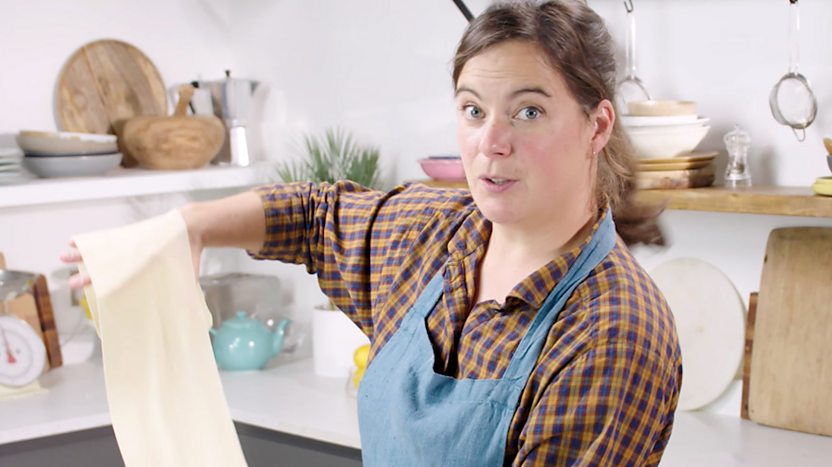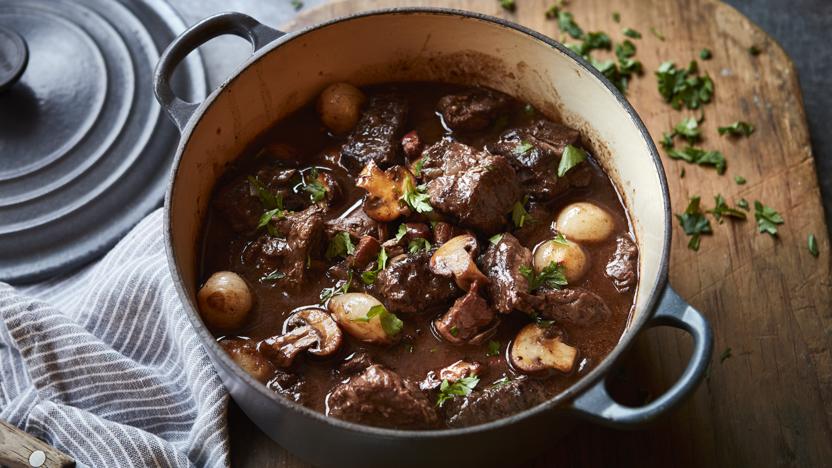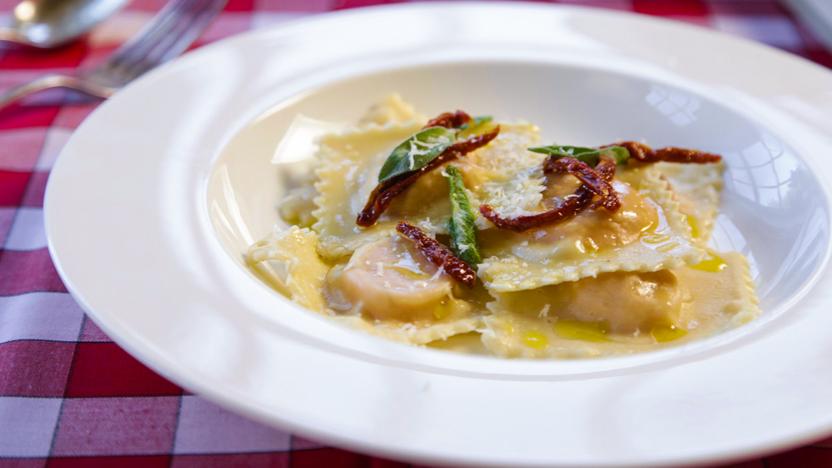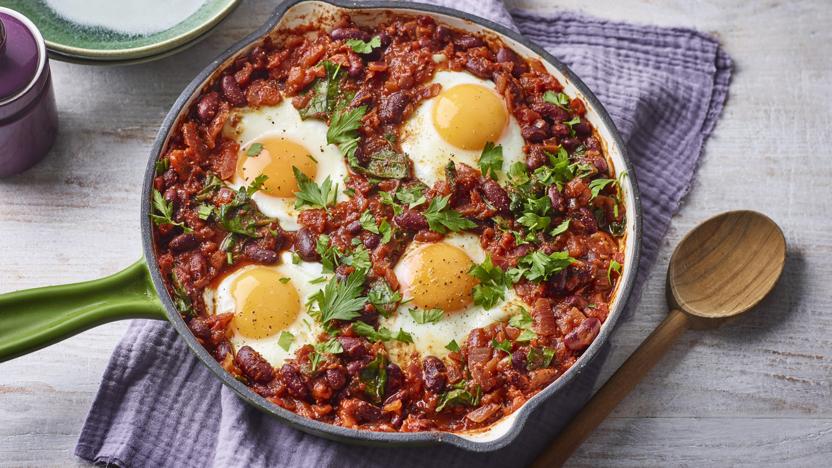Spinach and ricotta ravioli with sage butter
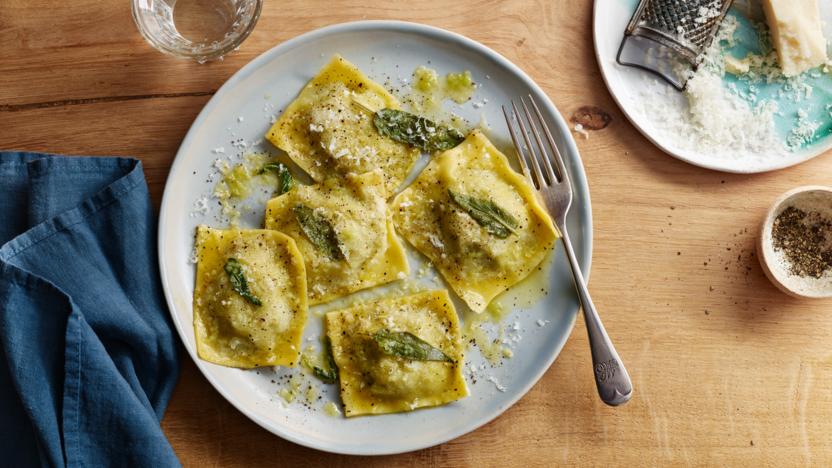
This classic spinach and ricotta recipe is a great introduction to making your own pasta.
Equipment: for this recipe you will need a pasta machine.
Ingredients
- 360²µ/12½´Ç³ú 00 flour, or strong white bread flour, plus extra for dusting
- 4 free-range eggs
- 200g/7oz fresh spinach, washed and drained
- 200g/7oz ricotta
- 40²µ/1½´Ç³ú Parmesan (or a vegetarian alternative), finely grated, plus extra to serve
- 1 lemon, grated zest only
- 20g/¾oz fresh sage leaves, stalks discarded
- 1 garlic clove, crushed
- 100g/3½oz unsalted butter
- sea salt and black pepper
Method
Put the flour, eggs and a large pinch of salt into the bowl of a freestanding mixer fitted with a dough hook and mix gently until it comes together. It may seem very dry at first, but it will gradually form a dough. If, after a minute or so, it still seems crumbly, add 1–2 teaspoons water, kneading after each addition. Continue to knead for 6–8 minutes, or until the dough is smooth and stretchy, and springs back when you press your finger into it. Divide the dough into four equal pieces, wrap tightly in cling film and refrigerate for at least 45 minutes.
Meanwhile, put the spinach into a large dry frying pan and place over a high heat. Cook the spinach, turning frequently, for 3–5 minutes until it has completely wilted. Drain in a sieve, pressing out as much liquid as possible, then wrap in a clean tea towel and press out any remaining liquid, so the spinach is as dry as possible. Finely chop the spinach and transfer to a bowl, together with the ricotta, Parmesan and lemon zest. Season to taste with salt and plenty of black pepper, mix well and set aside.
Put the sage, garlic and butter into a saucepan large enough to hold all the pasta once cooked. Place over a medium–low heat until the butter melts, simmer gently for 5 minutes, then remove from the heat and leave to infuse. Season with a pinch of salt and pepper.
Take one portion of dough from the fridge, remove the cling film and lightly dust the dough with flour. Flatten with a rolling pin to the width of your pasta machine. Feed the dough through on the widest setting, then fold each side of the dough to the centre, as if you were folding a letter to fit inside an envelope. Feed the dough through on the widest setting again.
Adjust the rollers to the next setting and roll the dough through the pasta machine again. Continue to roll the dough through the machine, decreasing the thickness by one setting each time and dusting with a little more flour if it becomes sticky. Do not be tempted to skip settings on the pasta machine, otherwise the dough may tear.
Once you have rolled it through the thinnest setting, cut the long sheet of pasta in half widthways. Lay one length on a floured work surface and set the other half to one side, covered with a clean damp tea towel.
Place teaspoonfuls of the ricotta mixture at even intervals along the middle of the pasta sheet, using no more than about a quarter of the mixture. You should be able to fit about nine teaspoons of filling along the sheet of pasta.
Using a pastry brush and water, dampen the pasta around the ricotta filling. Now take the other half sheet of pasta and carefully lay it over the ricotta, gently pressing down around the mounds of filling and pushing out any air pockets.
Using a sharp knife, trim the pasta into evenly sized squares of ravioli, then lay them out on a tray, dust with a little flour and cover with cling film.
Keep the trimmings for other pasta dishes, or to throw into a soup. Roll out and fill the remaining three pieces of pasta in the same way.
When ready to serve, bring a large pan of salted water to the boil and place the pan of sage butter over a low heat. Cook the ravioli (in batches if necessary) in the boiling water for about 3 minutes. Remove with a slotted spoon and add to the pan of sage butter. Gently stir to combine, then serve immediately with a little more Parmesan and black pepper.
Recipe Tips
To make this recipe 100% vegetarian, look for vegetarian Italian-style hard cheese instead of Parmesan.
